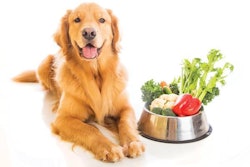Pet obesity in the US increased for a fourth straight year in 2013, according to data released this January by Veterinary Pet Insurance, a provider of pet health insurance. The company says that in 2013, its policyholders filed more than US$52 million in claims for conditions and diseases related to pet obesity, a 7.3% rise from 2012.
That’s one way to measure the continually expanding waistlines of US cats and dogs. The Association for Pet Obesity Prevention (APOP) measures them by surveying veterinarians across the country about the number of overweight or obese pets they see in their practices. By that metric, last reported in March 2014, 57.6% of US cats and 52.6% of US dogs are overweight or obese.
Such alarming statistics are not unique to US pets, either; other developed markets, such as the UK, also continue to battle pet obesity. In the UK, veterinarians believe up to 45% of the pets they treat are overweight or obese, according to the Pet Food Manufacturers Association.
And, speaking of alarming, many pet owners don’t realize their pets are too heavy or, frankly, are simply in denial. In the latest APOP survey, among pet owners whose pets were considered obese by veterinarians, 93% believed their pets were of normal weight.
So, perhaps it’s a hopeful sign that at least some US pet owners are starting to pay more attention to their pets’ girth. In its January 2015 Pet Owner Survey, Packaged Facts found that only 16% of dog owners and 12% of cat owners said they strongly agree with this statement: “I buy petfood/nutrition products related to weight/obesity issues for my pet.” However, for pet owners who said they consider benefit statements associated with specific food product ingredients very important—in other words, they seem to shop with nutritional benefits in mind and look for such benefits on product packaging—the percentages rise to 26% and 20%, respectively, of dog and cat owners buying products related to weight or obesity.
This seems to indicate that pet owners who try to learn about pet nutrition may be more able or willing to recognize overweight or obesity in their pets and—even better—to do something about it. Yet, is that enough? Could petfood manufacturers and the industry be doing more to help?
Well, soon all will have to: The grace period for enforcement of new regulations mandating calorie content statements on all dog and cat food labels sold in the US is ending soon. Apparently, the exact date when the Association of American Feed Control Officials will start enforcing the mandate is still unknown; yet the regulations are on the books and will be in full effect. (You can learn how to prepare and comply during Petfood Forum 2015, when David A. Dzanis, DVM, PhD, DACVN, CEO of Regulatory Discretion Inc., will explain the new regulations, plus how to correctly calculate calorie content, proper label declaration and format, and more.)
Some people in the industry would argue that calorie content statements by themselves won’t necessarily help pet owners, and I don’t disagree. But it’s a great start. See, this issue hits home for me, as I have an overweight cat who devours all food in sight if allowed, plus another cat who daintily nibbles at his portion, in addition to having a sensitive stomach. Finding a food that serves both cats’ needs has been a challenge. (I tried feeding each a different food and spent more time keeping them away from the other’s bowl—not a successful experiment.)
For me and other owners of overweight pets who want to help them slim down, calorie content statements at least provide a point of comparison among products. Otherwise, we have to turn to the guaranteed analysis on petfood labels to compare levels of protein, fat and fiber, and without a solid background in pet nutrition, that’s a guess at best. (Believe me, I’ve spent countless hours in pet stores on that exercise.)
What’s also helpful are feeding guidelines in measurements we can relate to, such as portions of cups—so we don’t have to try and calculate kcals and the like. Keep in mind that even the most dedicated pet owners—those of us who will spend a good amount of time reading labels—often don’t have the knowledge or expertise for such calculations, not to mention understanding exactly what they mean.
It’s true that human food products have been required to carry calorie counts on their packaging for some time now, and the incidence of overweight or obesity in people keeps rising, too. One reason could be that most people don’t understand that not all calories are created equal—but that may also be changing.
According to research from Mintel released in late January, 83% of US consumers say they prefer to count exercise reps instead of calories in trying to lose weight. Among consumers who diet, 40% agree that food and drink products high in protein help them feel fuller longer; at the same time, the number of new food and drink products launched with high or added protein or fiber claims increased from 2013 to 2014, while new product launches with low/no/reduced fat, sugar or calorie claims declined.
There’s no research available to date on if such consumers are applying the same type of thinking to their pets’ food; yet we do know that more and more people are reading product labels, whether for human foods or petfoods. And, they’re looking for the same type of products claims for their pets’ foods as they do for their own, as indicated by the Packaged Facts research. So, just as petfood manufacturers look to the human foods industry for trends and consumer demands, perhaps there are ideas to find for helping with weight loss and control beyond calorie counts.
















